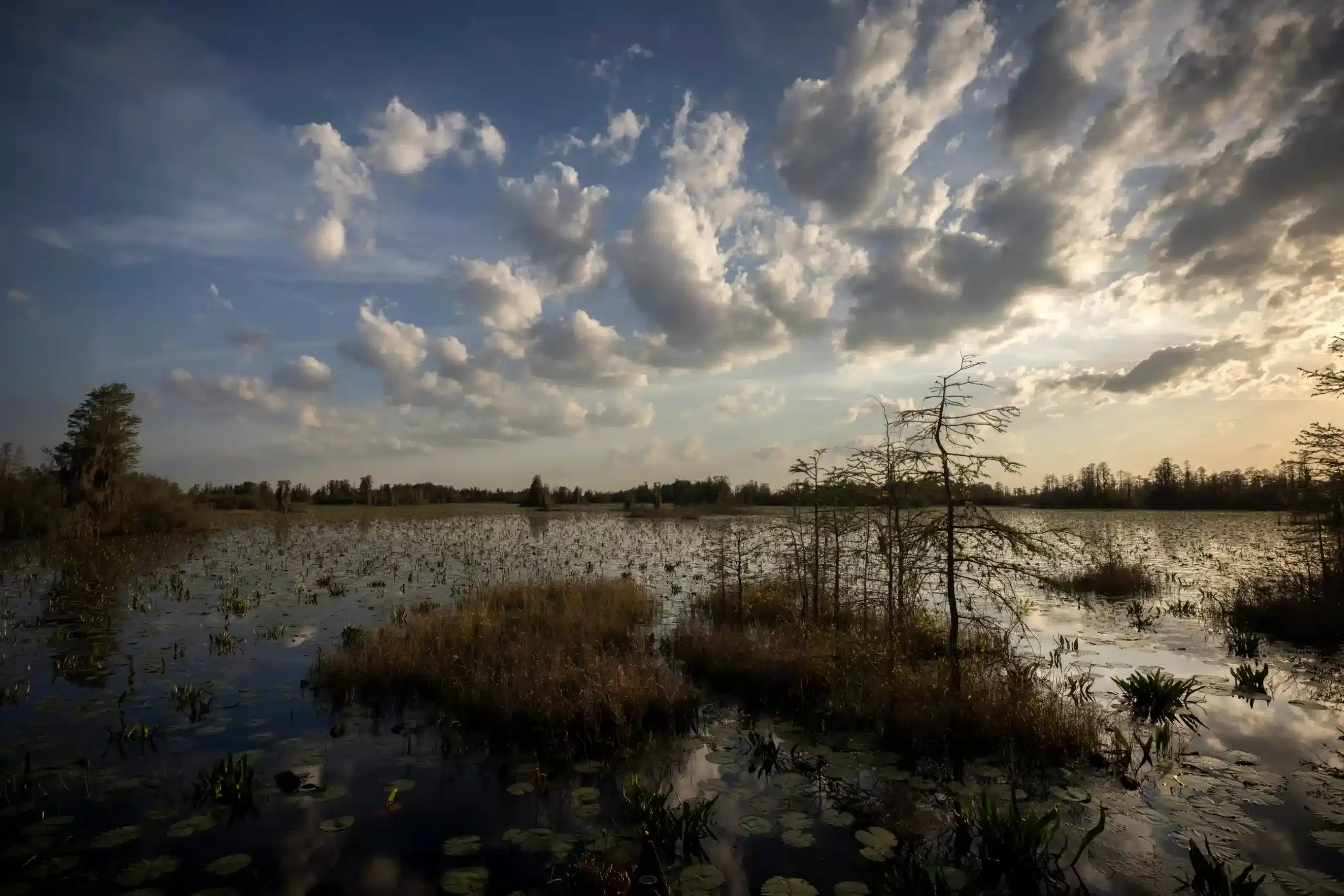
More than 200 species of birds, 40 types of mammals and 50 species of reptiles call the Okefenokee swamp their home. Photograph: Stephen B Morton/AP
An Alabama company wants to mine near the 440,000-acre Georgia swamp, but locals and scientists fear it could be irreparably harmed
Humans, as a general rule, are rather unkind to swamps. They are disparaged as rotten places that must be drained, either literally, to make way for farmland and houses, or metaphorically, to make way for demagogues. It’s to this backdrop that one of the last remaining intact large swamps in the US, a pristine wetland almost unrivaled anywhere in the world, finds itself under threat from a planned mining project.
The Okefenokee swamp, found in the deep southern reaches of Georgia, may lack the fame of the fabled national parks of the US, but it is no less remarkable. Untouched by development, the 440,000-acre (180,000-hectare) swamp is a sort of time machine, offering an idea of what this mosaic of pine islands, with its riot of wildlife, would have looked shortly after its formation about 7,000 years ago.
“There’s nothing like it, certainly not in North America,” said Rhett Jackson, a hydrologist at the University of Georgia. The hydrological plumbing of the Okefenokee is still intact and its relative isolation means it is free of invasive animals and plants, unlike the larger and more troubled Everglades to the south, which has been torn apart by agriculture and is overrun by introduced pythons and iguanas. “I’ve never seen a cleaner piece of land than this,” said Michael Lusk, manager of the Okefenokeenational wildlife refuge. “This is what a large wetland is supposed to look like. It’s unique.”
Cruising the Okefenokee by boat at dusk offers a glimpse of its glories. Spanish moss dangles from cypress trees as the snouts of alligators poke out from the tea-colored water, blackened by the peat soil that underlies this sprawling ecosystem. An owl is perched on one tree, a pileated woodpecker on another. There are more than 200 species of birds, 40 types of mammals – including bears and deer – and 50 species of reptiles here.

An American alligator basks in lily pads in the Okefenokee national wildlife refuge. Photograph: Stephen B Morton/AP
There are more than 600 types of plant too, with lilies trembling like clattered cymbals as the boat passes by. A hefty alligator, known as Big Papa by guides, lounges torpidly by the water, soaking up the last dregs of sunlight. Ibises and egrets roost in a stand of nearby trees, resembling large flapping balls of cotton. There is no sludge, and no foul odor.
Far from the tendrils of suburbs or oil or gas drilling, the swamp has endured unmolested bar some early timber cutting, even if its backwoods location has provided it a certain obscurity. Still, more than 300,000 people visit it each year – it is particularly popular with Germans, park officials say. It has been a national wildlife refuge since 1937 and 350,000 acres (142,000 hectares) were given national wilderness area protection, the highest federal safeguard, in 1974. “It’s one of the most beautiful places in the world, so why shouldn’t we value and protect this as much as we would the Grand Canyon or Yellowstone?” asked Lusk.
We may value natural landscapes that have painstakingly evolved over millennia, but, on the other hand, there is also the monetary value of strip-mining such a place for minerals that can be used to put pigment into paints and toothpastes. The latter priority is the focus of Twin Pines Minerals, an Alabama-based company that has proposed a mining project about 3 miles (5km) from the south-east edge of the Okefenokee.
